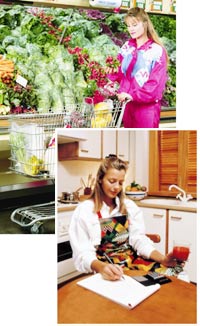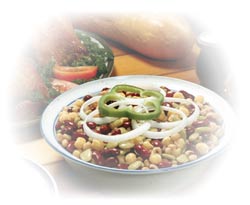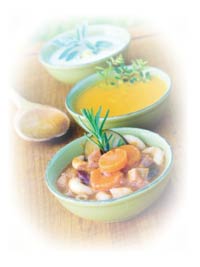Healthy Eating on a Budget - Healthy Life Essex

When finances are overstretched it is easy to fall into the trap of neglecting our health. However, the extra stresses during this time mean that it is more important than ever to look after ourselves. The good news is that healthy eating can help us through challenging times by improving our energy levels, concentration, mood and sleep as well as boosting our immune system. What is more, eating healthily on a budget can be achieved easily with some planning and a little creativity.
Shopping – it sounds mundane but planning what you are going to eat for the we ek and making a shopping list means that that you can save a considerable amount of money by just buying what you need. It’s a good time to take advantage of special offers on items that you will use but avoid impulse buys and try not to go shopping on an empty stomach as you will be tempted to buy more than you need!
ek and making a shopping list means that that you can save a considerable amount of money by just buying what you need. It’s a good time to take advantage of special offers on items that you will use but avoid impulse buys and try not to go shopping on an empty stomach as you will be tempted to buy more than you need!
Eat foods that satisfy your hunger – refined carbohydrates such as white rice, white bread, crisps, biscuits and chocolate disrupt our blood sugar levels leading to cravings and overeating which can add pounds to your waistline as well as your shopping bill!. Opt for whole foods such brown rice, wholemeal bread, oats, fruit and vegetables as they generally have a lower glycaemic index (GI) and provide dietary fibre which helps to balance blood sugar levels and keep hunger at bay.
Eat a nutritious breakfast – it is the most important meal of the day and what you eat for breakfast can determine how you feel for the rest of the morning. There are a vast range of breakfast cereals available many of which are high in sugar and low in fibre, making you more likely to spend money on a mid morning muffin or chocolate bar. For a satisfying breakfast opt for wholegrains and protein, for example, porridge with nuts and seeds, muesli or scrambled eggs on wholemeal toast.
Cook your own food – many of us like to treat ourselves to a takeaway now and then but regular takeaways and ready meals can have a detrimental effect on both your health and your pocket! They are often high in salt, saturated fat and additives whilst lacking in nutrients and fibre. Impress family and friends by making your own chicken tikka masala, Thai curry or stir fry served with brown basmati rice. They can be made in less than 30 minutes and are healthier, cheaper and bursting with flavour!
Meat – when it comes to buying meat, good quality lean meat really is preferable although it can be pricey. To make the meat that you buy go further try adding extra vegetables to casseroles, shepherd’s pie, spaghetti bolognaise, lasagne and risottos. Darker pieces of chicken and the bones left over from Sunday roast can also be used to make a delicious homemade stock or soup.
Fish – oily fish is an excellent source of omega 3 which is often lacking in the British diet. There is a growing body of research linking consumption of omega 3 fatty acids to improved cardiovascular, brain and immune health and to improvements in inflammatory conditions such as asthma, psoriasis and rheumatoid arthritis. Buying fresh fish is great but you don’t have to miss out on these health promoting fats if you can’t afford it as tinned fish such as mackerel and sardines are also bursting with omega 3 and they are relatively cheap.
 Introduce pulses and beans into your diet – beans and pulses are not just for vegetarians so if you haven’t used them before now is a good time to try. They are a nutritious, satisfying and tasty alternative to meat and much more economical. Combined with rice, beans and pulses are an excellent source of high quality protein and they provide us with fibre which helps to satisfy hunger, promote regular bowel movements and keep our cholesterol levels in check.
Introduce pulses and beans into your diet – beans and pulses are not just for vegetarians so if you haven’t used them before now is a good time to try. They are a nutritious, satisfying and tasty alternative to meat and much more economical. Combined with rice, beans and pulses are an excellent source of high quality protein and they provide us with fibre which helps to satisfy hunger, promote regular bowel movements and keep our cholesterol levels in check.
Chickpeas, beans and lentils are incredibly versatile and can be used in curries, soups, casseroles, burgers and salads. Treat the kids to tasty home made bean burgers! Chickpeas can be used to make falafels or hummus which is a nutritious snack served with raw vegetables such as carrots, peppers and sugar snap peas. Continental or puy lentils make an excellent alternative to meat in shepherd’s pie, lasagne, spaghetti bolognaise and chilli. The meats lovers in your family may not even notice the change! See our recipes below for some ideas.
If you are not used to eating beans and pulses, they may initially cause wind and bloating. If this happens, reduce your intake and gradually build it up. Adding kombu (a Japanese sea vegetable) or ginger during cooking or freshly squeezed lemon juice after cooking can enhance digestibility.
 Take advantage of fruit and vegetables – one of the most important things that you can do for your health is to include a wide variety of fresh fruit and vegetables. Studies consistently show that high fruit and vegetable consumption is related to reduced risk of heart disease, stroke and cancer.
Take advantage of fruit and vegetables – one of the most important things that you can do for your health is to include a wide variety of fresh fruit and vegetables. Studies consistently show that high fruit and vegetable consumption is related to reduced risk of heart disease, stroke and cancer.
There is nothing like a bowl of delicious homemade soup to warm you up on a cold winter’s day and it is also an ideal way of using up those left over vegetables. For a satisfying, hearty soup try adding some red split lentils or beans too. Our tomato and Lentil soup is delicious. Vegetables are wonderfully versatile and are great in salads, stir fries, casseroles, curries and risottos.
To use up left over fruit, try making a delicious home made fruit crumble, banana cake, apple cake, carrot cake or smoothie.
Drink more water –instead of buying fizzy drinks and squashes, save money by investing in a water filter. Water is cheaper and healthier than soft drinks which tend to contain sugar and additives such as artificial sweeteners. It may surprise you that artificial sweeteners such as aspartame have been shown to stimulate hunger which means you are likely to end up eating more!
Add flavour to your meals naturally – cooking with onions and garlic is a great way of enhancing the flavour of meals and looking after your health. Not only are they cheaper than buying sauces or expensive flavourings but they fight infection, support liver detoxification and help to prevent heart attacks and strokes by reducing cholesterol and blood pressure.
Growing your own herbs is also an excellent and healthy way of enhancing the flavour of meals and saving money. Herbs such as rosemary, basil, sage, parsley and mint can be grown in the garden on indoors on a windowsill.
Use your freezer – a freezer is a great way of taking advantage of special offers and avoiding waste. You can also save time by cooking in bulk. See our recipes marked ** (see notes in recipe re freezing)
Finally, be creative and have fun! Why not set yourself a challenge to use everything in your fridge and not let anything go to waste. If you are in need of a little inspiration, the internet is a great resource for looking up recipes.

Serves 4
Ingredients:
300g dried chickpeas (soaked overnight or for at least 8 hours)
1-2 tablespoons olive oil
1 large onion, peeled and chopped
2-3 cloves garlic, peeled and chopped
200g of vegetables e.g cauliflower, broccoli, courgette, okra
4 new potatoes (optional)
5 mushrooms, peeled and chopped
2 tablespoons of tomato puree
1 ¼ pints of water
1 inch cube of ginger, peeled and grated
1 oz of creamed coconut
1 teaspoon of turmeric
1 teaspoon coriander
½ teaspoon cumin
Pinch of chilli powder or flakes
Black pepper
3 cardamon pods
1 heaped teaspoon of garam masala
Drain the soaked chickpeas, add fresh water and cook according to the instructions on the pack (usually about 90 minutes) and then drain them.
Add the olive oil to a large saucepan with 2 tablespoons of water and lightly fry the onion with the ginger, turmeric, coriander and cumin for about a minute.
Add all of the other ingredients, stir well and leave to simmer with the lid on for 20-25 minutes, stirring occasionally.
Serving suggestion: serve with brown rice or quinoa
Variation: Reduce the amount of chickpeas and add a chicken breast.
You could use curry powder instead of tumeric, coriander, tumeric and chilli if you do not
have these spices separately.
If you are in a hurry use a tin of chickpeas instead of dried ones.
Suitable for freezing
Serves 2
Ingredients:
2 chicken breasts, cubed
A handful of broccoli, chopped
6 mushrooms, peeled and sliced
1 onion, peeled and chopped
1 heaped teaspoon of Garam Masala
½ teaspoon turmeric
½ teaspoon cumin
½ teaspoon coriander
1 tablespoon tomato puree
2-3 cloves of garlic, finely chopped
1 Chilli, deseeded and finely chopped
1-2 tablespoons of natural Greek style yoghurt
2 fresh tomatoes, chopped into large pieces.
1 tablespoon olive oil
Add the olive oil to a large saucepan with 2 tablespoons of water and lightly fry the onion on a low heat with the turmeric, coriander, cumin and garam masala and chilli for 1-2 minutes.
Add the chicken and tomato puree and simmer on a low heat for 5 minutes, stirring frequently. If it starts to stick add a little water.
Add the garlic, mushrooms and broccoli and simmer on low heat for 5-10 minutes, continuing to stir frequently. (Suitable for freezing at this point)
Stir in the yoghurt and tomatoes, simmer for another couple of minutes and serve.
Serving suggestion: serve with brown basmati rice.
Variation: this curry also works well with prawns instead of chicken.
Serves 4
Ingredients:
1 large onion
1 green pepper, deseeded and chopped
3 cloves garlic
1 green chilli, deseeded and chopped
2 carrots
2 sticks of celery,
1 pint of stock or water (approximately)
1 tablespoon of dried mixed herbs
3 large tomatoes, chopped (or a tin of chopped tomatoes)
300g of beans e.g. black beans or butter beans (soaked overnight or for 8 hours).
Black pepper
A pinch of sea salt
1 bay leaf
Drain the soaked beans, add fresh water and cook according to the instructions on the pack (usually about 40 minutes).
Add the olive oil to a large saucepan with 2 tablespoons of water and lightly fry the onion and celery for about a minute.
Add all of the other ingredients, stir well and leave to simmer with the lid on for 20-25 minutes, stirring occasionally. Remove the bay leaf before serving.
Serving suggestion: serve with brown rice or quinoa
Tip: If you are pushed for time, use a tin of mixed beans instead of dried beans.
Suitable for freezing
Serves 4
Ingredients:
1 onion, peeled and chopped
2 carrots, chopped
2 cloves garlic, peeled and finely chopped
1 medium potato, peeled and chopped
1 leek, chopped
1 cup red split lentils, cooked
4 large tomatoes, chopped or 1 can of tomatoes
1 ½ pints vegetable stock or 1 ½ pints of water
1 tablespoon tomato puree (if using fresh tomatoes, not needed if using tinned tomatoes)
2 teaspoons dried mixed herbs or fresh herbs of your choice
1 tablespoon Worcester sauce
Freshly ground black pepper
1 bay leaf
Heat the stock (or water) in a saucepan, bring to the boil and add all of the other ingredients. Stir well.
Reduce the heat to a gentle simmer and cook for 20-25 minutes or until the vegetables are tender. If the soup is too thick add a little water.
Remove the bay leaf, add freshly ground black pepper and serve.
Suitable for freezing
Serves 4
Ingredients for the lentil mix:
1 cup of continental lentils cooked or 1 can of brown lentils in water (no added sugar or salt)
1 onion, chopped
1 carrot, chopped
1 small courgette, chopped and/or half a cup of peas
1 tablespoon of mixed herbs
1-2 tablespoons Worcester sauce
¼ pint of water or homemade stock (only if using dried cooked lentils)
2 handfuls of spinach or curly kale, chopped
Heat the cooked lentils and water (or canned lentils including the water) on a moderate heat.
Add the stock/water, onion, mixed herbs, Worcester sauce, carrots and courgette.
Simmer on moderate heat for 15 minutes.
Remove from the heat and add the spinach / curly kale
(Suitable for freezing at this point)
For the topping:
2 large sweet potatoes
1 level teaspoon butter
1 teaspoon mustard
Freshly ground black pepper
Heat the oven to 190C, 375F, gas mark 5
Peel the sweet potatoes and cut them into large pieces. Add them to a saucepan of water boil for 15 minutes or until tender.
Drain, add the butter and mustard and mash.
Place the lentil mix in a casserole dish and spread the sweet potato mash on top. Rub a little butter on top or add a sprinkling of grated cheese.
Cook for 25-30 minutes until golden on top
Serving suggestion: Serve with a selection of steamed vegetables
Tanya Artus BSc. Nutritional Medicine, Dip. Hom

Tanya Artus is a qualified and registered nutritional therapist and homeopath. She practices from Southbourne Physiotherapy clinic in Westcliff On Sea.
For more information or to make an appointment with Tanya call 0793 253 5929
or email tanya@inspiringhealth.co.uk web: www.inspiringhealth.co.uk
